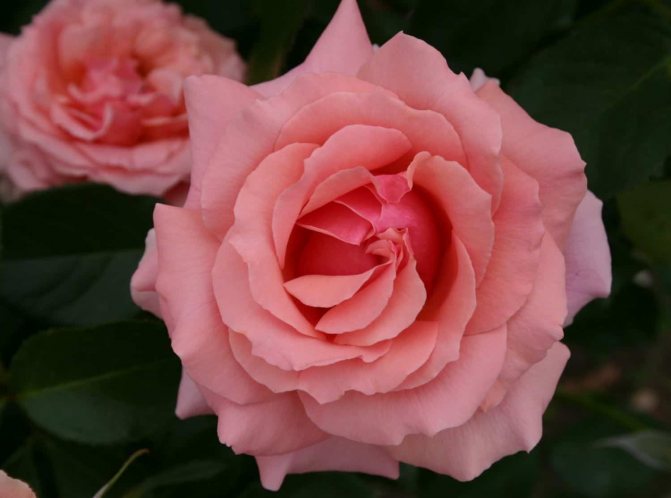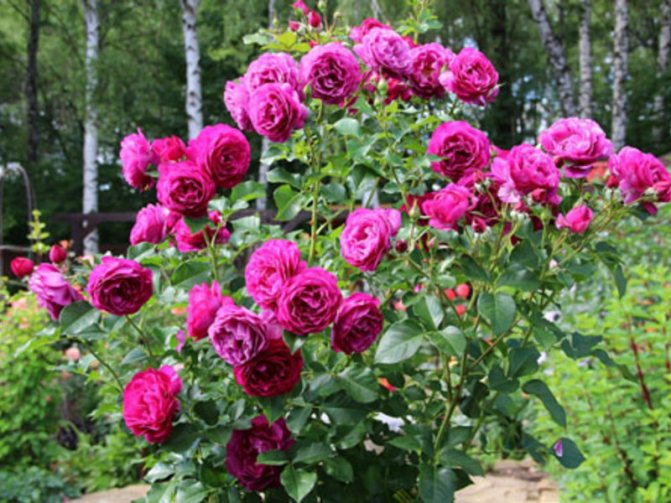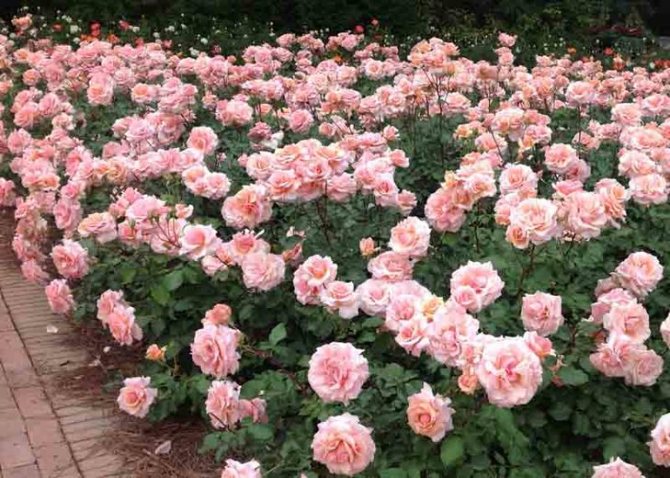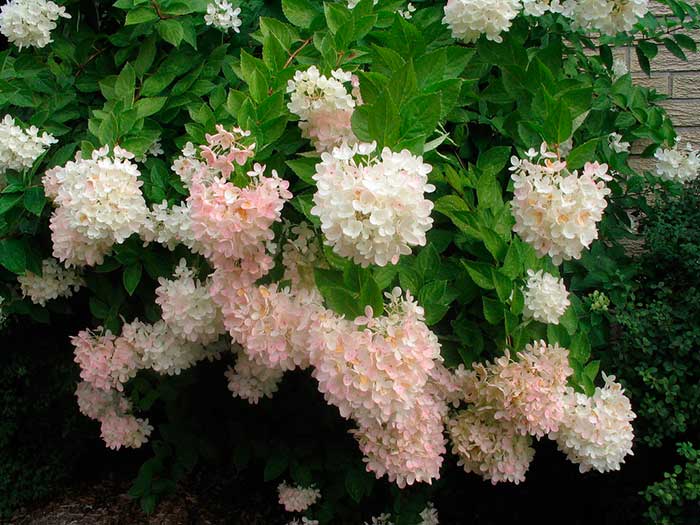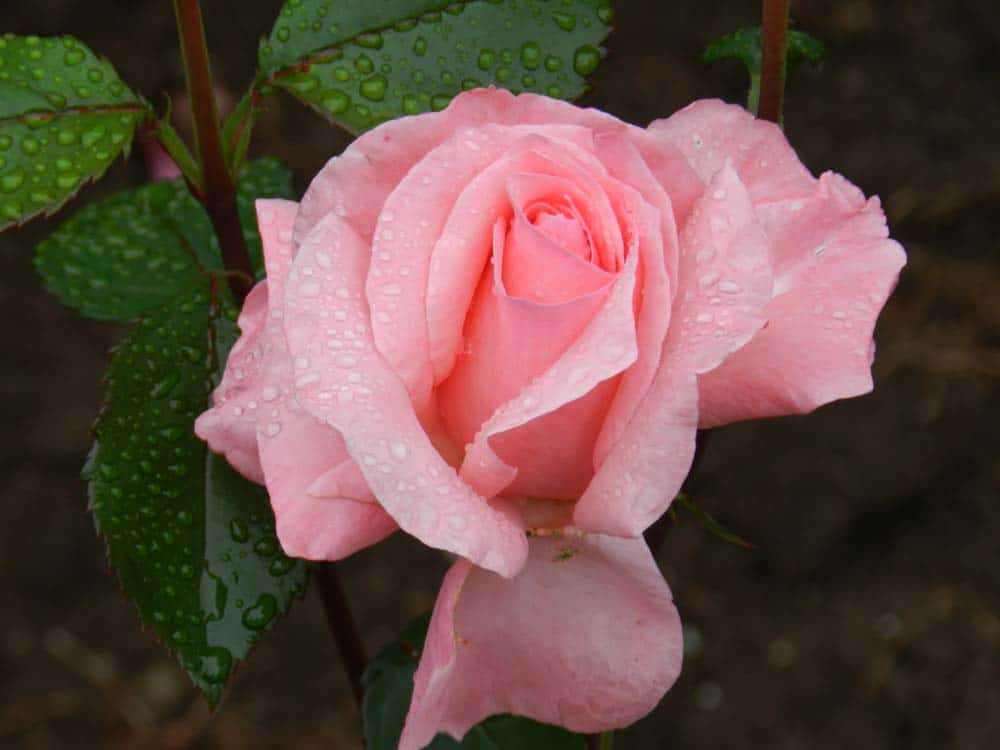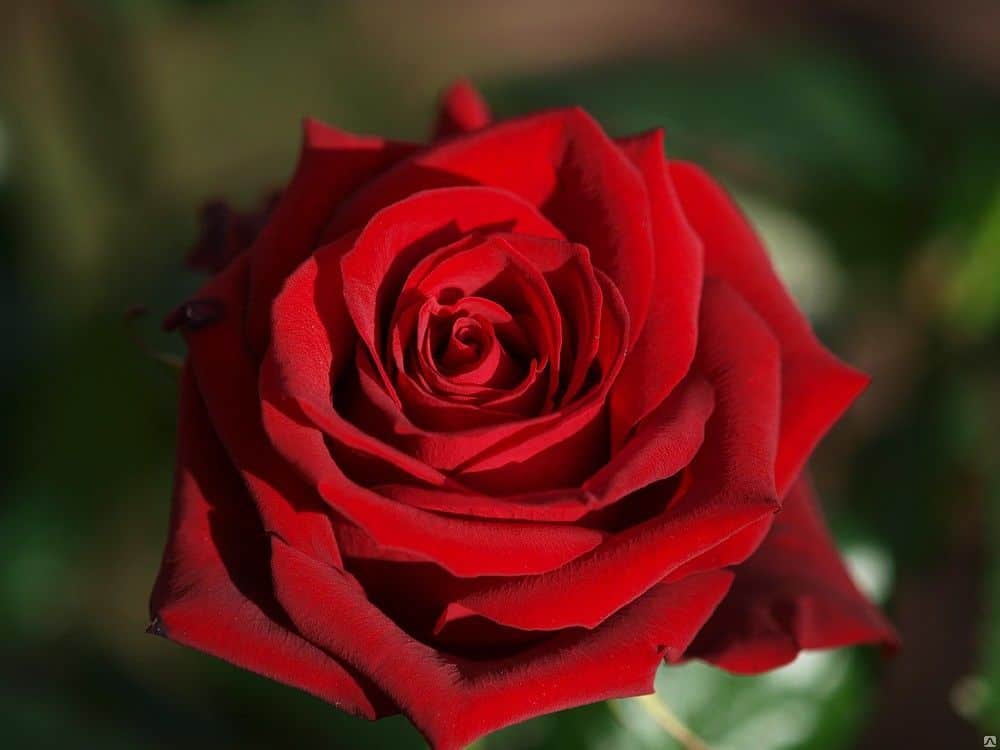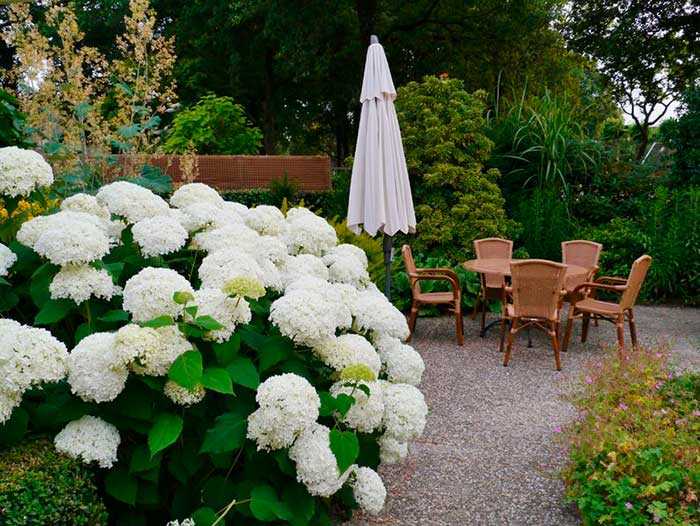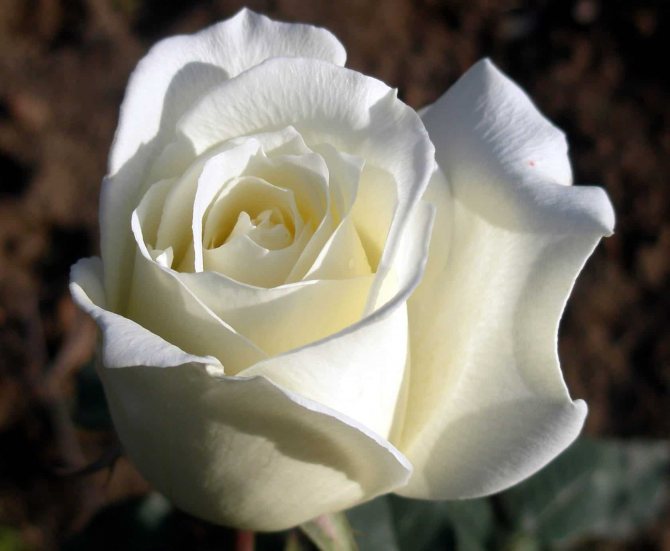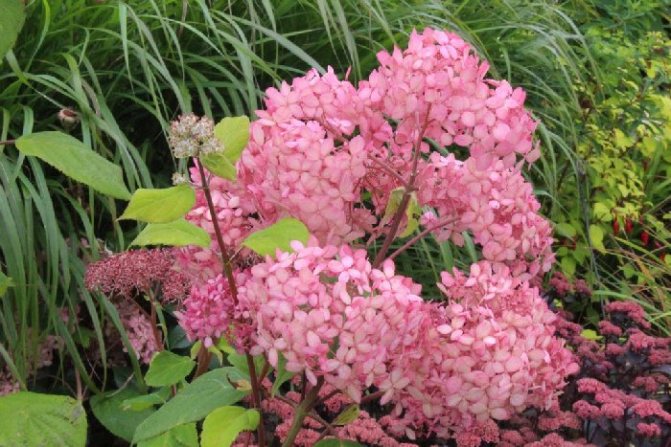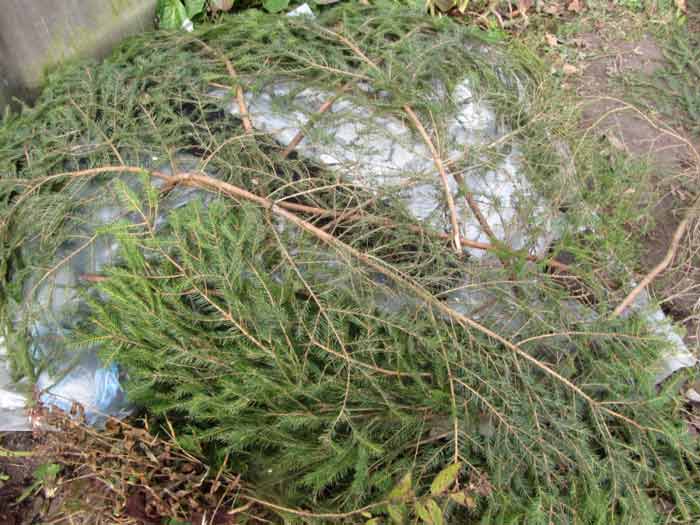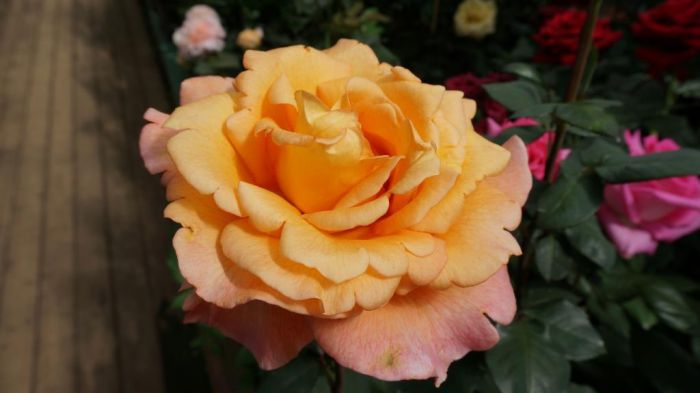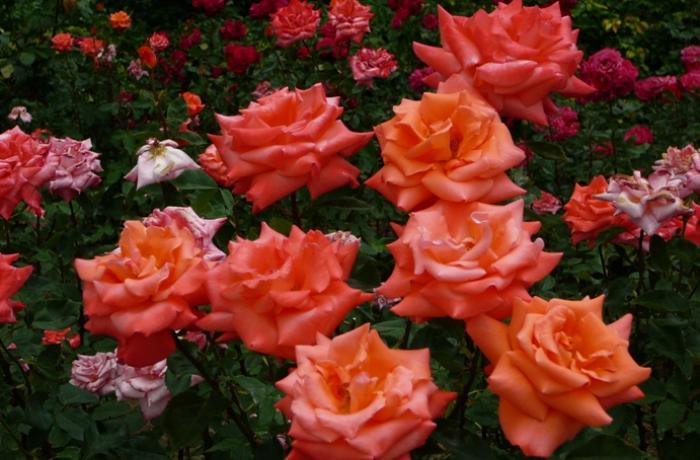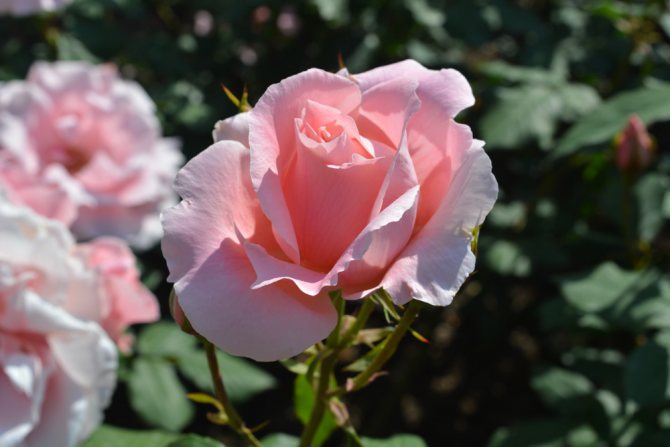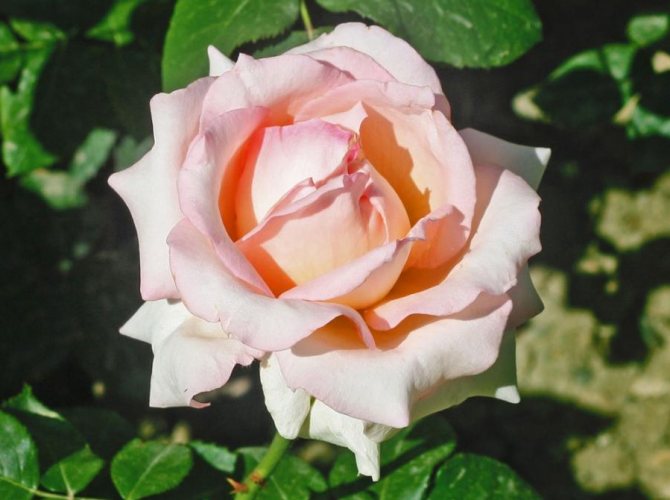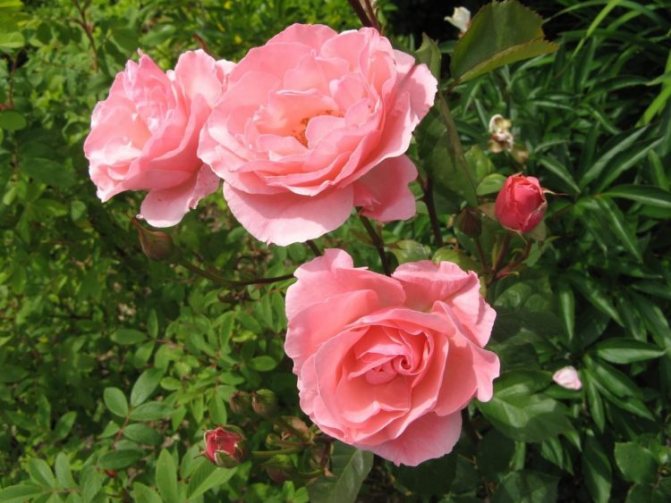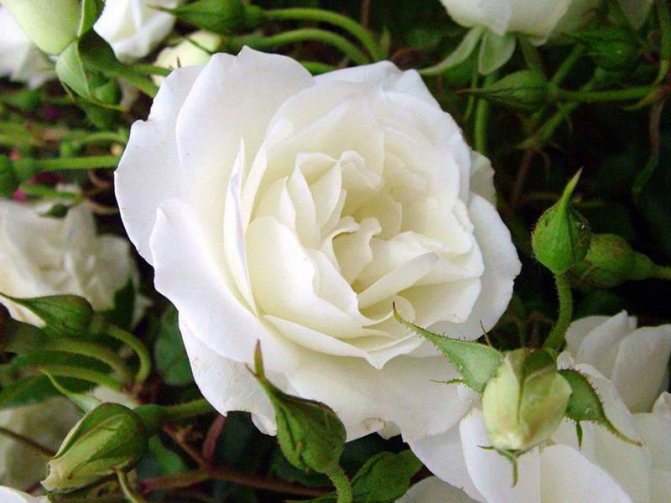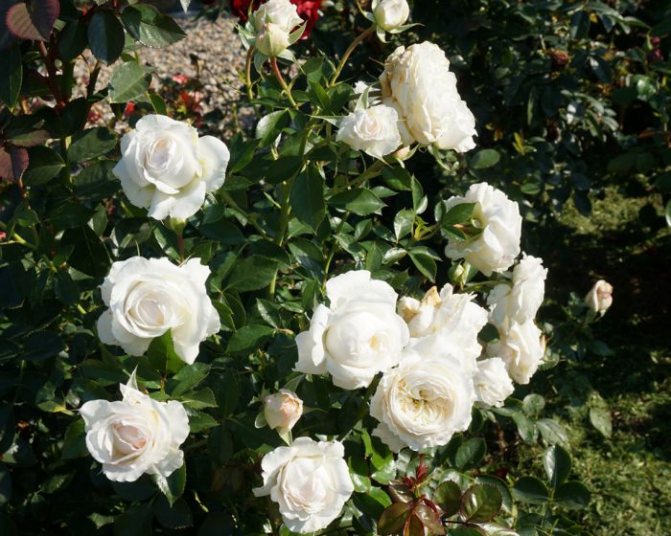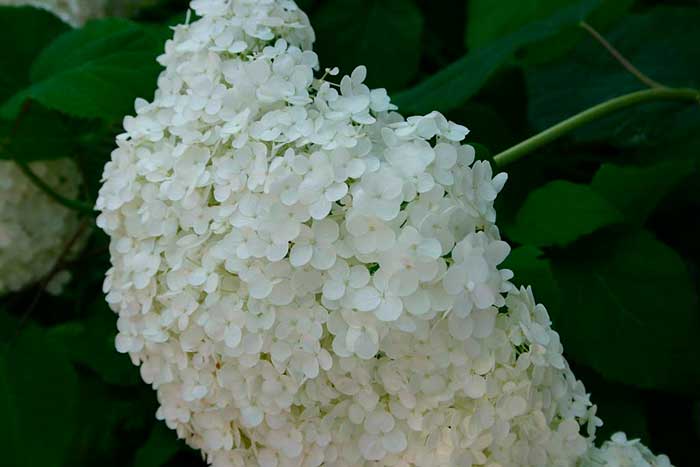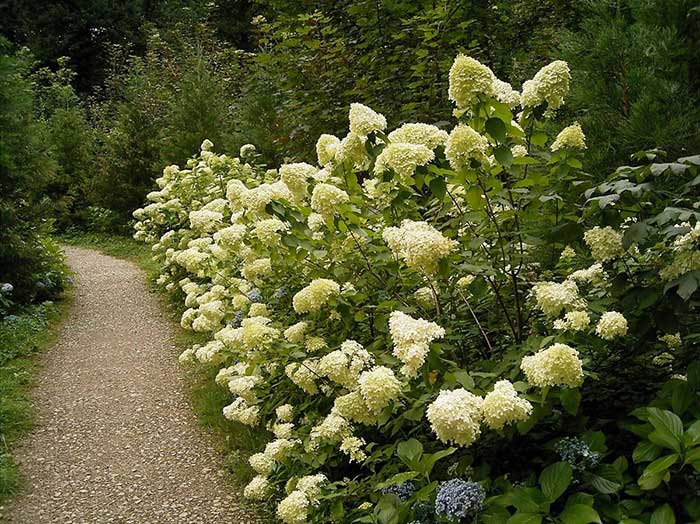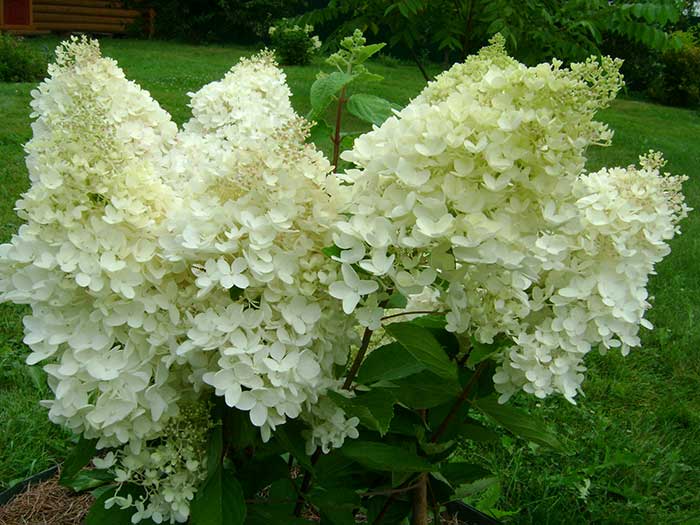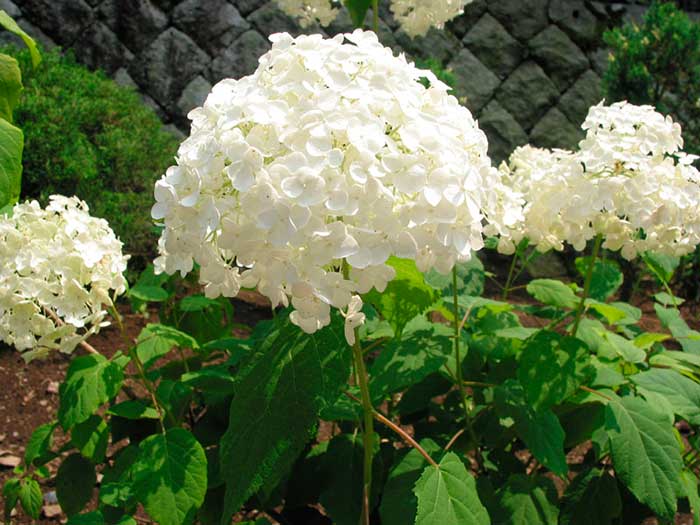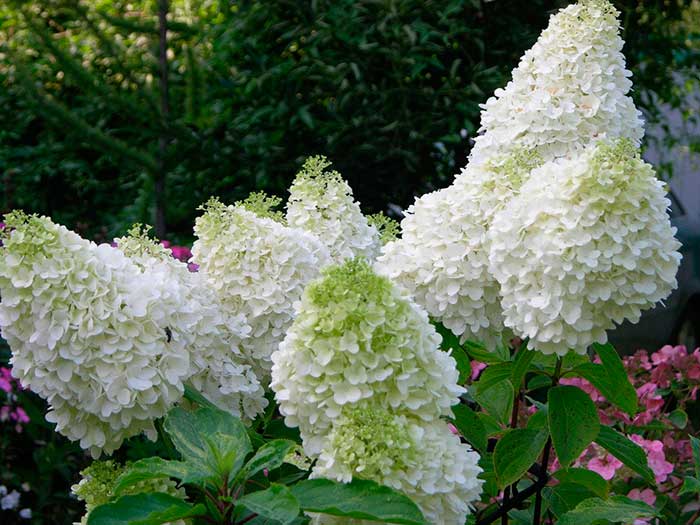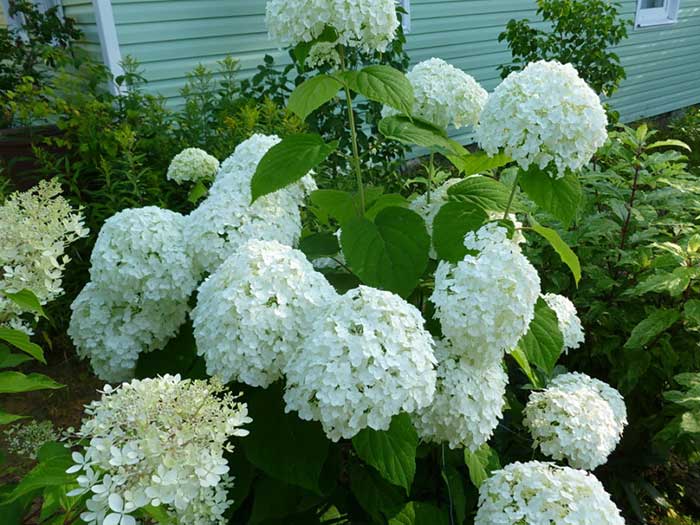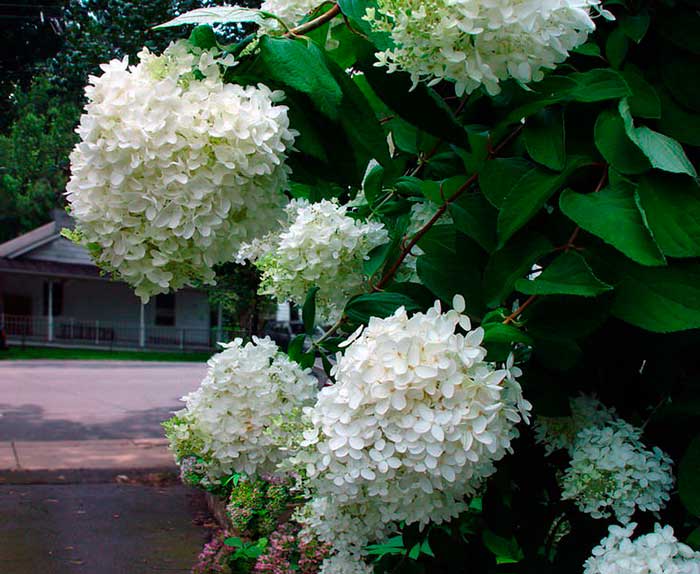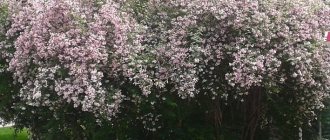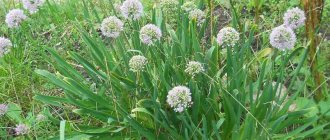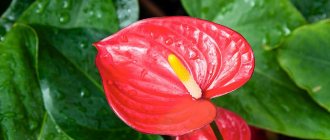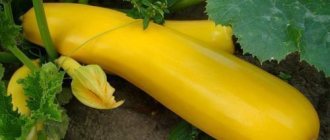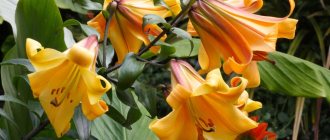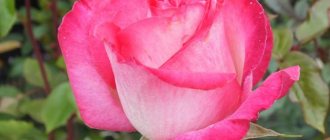Flowers in a person's life take a huge place, summer residents try to plant something special on their site every new season. Hydrangea is appreciated for its beautiful appearance and unpretentious culture. This culture has been cultivated since the 19th century, in natural conditions it is common in Asian countries. Hydrangea Grandiflora is considered the most famous variety of this crop, therefore it is very popular in the world. Today we will talk about this amazing ornamental shrub, share with you the rules of planting and care, as well as ways of propagating hydrangeas. If you have not yet planted this amazingly beautiful plant in your area, then it is definitely worth a try.
Pruning
Pruning hydrangea trees is an important part of grooming. Due to its rather wide and dense crown, hydrangea requires systematic pruning. The procedure is best carried out in early spring (III-IV), at the very beginning of the growing season, shortening all shoots above 2-3 eyes and completely removing frozen, weak and diseased shoots. When pruning, you should not be afraid of losing flowers, the plant forms flowers on annual shoots that have grown in this growing season.
In order for the bush to delight with its flowers for a long time, it is required to carry out correct pruning and shaping. Flowers will be on those shoots that appeared in the spring. Gradually, the bushes thicken strongly and stop blooming.
To prevent this from happening, a strong pruning is required in March-April. Healthy inflorescences must be cut to the first strong bud, which completely lacks traces of disease. It is recommended to cut off all branches and dried shoots that have frozen over the winter. Weak branches should be removed.
Paniculate and tree-like hydrangea varieties are pruned according to the classical scheme - completely removing damaged and weakened shoots. In late autumn, it is recommended to remove all stiff shoots and those that will definitely not survive the winter. A large-leaved hydrangea needs to be pruned in a slightly different way. Only old and weakened shoots are removed in spring. It is better not to carry out autumn pruning, so as not to unnecessarily weaken the plant.
Hydrangea is tree-like and all its varieties have excellent winter hardiness. Even if it was damaged by frost, then in the spring it quickly returns to normal and begins to actively grow and bloom. These qualities make it desirable in many climatic zones. Shelter is performed only superficially and in the area of the root system. To do this, remove all twisted and weak branches. Clean the soil from the leaves and sprinkle the roots with mulch.
A large-leaved variety needs to be prepared for a winter shelter. She does not tolerate frost very well. A little preparation is done for this. The bush is required to be divided into two parts and bend each gently to the ground. After that, you need to cover the plant with agrospan or other material. On top of it, you need to lay a thick layer of dry foliage.
Descriptions of beautiful landscape design options using hydrangea can be found in many catalogs. This is an amazing plant that can decorate any site.
It is recommended to plant hydrangea in loose, loamy and moisture-permeable soil.A special requirement is imposed on the acidity indicator - hydrangea feels good on acidic soils with a pH of 5.5-6. In order for the tree hydrangea to "settle" on the site, planting is carried out immediately after the soil thaws:
- On the eve of planting, a hole is dug with a diameter of 0.4-0.5 m and a depth of 0.5 m. If the land is poor, the hole is dug deeper in order to add fertile soil to it.
- 4-5 buckets of water are poured into the pit and left overnight.
- The next day, humus, peat, compost, sawdust or pine litter (to acidify the soil), 2-3 pinches of colloidal sulfur, 50 g of mineral fertilizer (urea, superphosphate) are laid in the planting pit.
- A mound is formed in the center of the planting pit, which should be approximately level with the upper edge of the pit.
- The seedling is placed on a mound, the root system of the plant is carefully spread in different directions. Before this, long roots are shortened, broken branches are cut.
- When planting, the level of the root collar is controlled - the permissible depth is 2-3 cm. If the root collar is deepened more than the allowable one, the plant will not be able to develop normally.
- The soil around the seedling is tamped tightly, avoiding the formation of voids between the roots.
- The well with the planted plant is watered abundantly - the earth should be well saturated with moisture to the entire planting depth (0.5 m).
- The trunk circle is mulched with peat, coniferous spruce branches, bark or wood chips. Mulch will protect the superficial root system of the shrub from overheating and prevent weeds from overgrowing. Over time, organic material will begin to decompose and acidify the soil. The diameter of the mulch cover should correspond to the size of the crown of the shrub or may exceed it by 15-20 cm.
Hydrangea tree-like needs annual pruning, which is one of the main elements in plant care. With the help of pruning, they regulate the number and size of inflorescences - flowering "balls" will be much larger, although their number will slightly decrease. If you do not cut off the shoots of the plant, the bush will thicken and take on a neglected look, and the inflorescences will not look spectacular and bright.
The first pruning should be started only when the age of the bush reaches 5-6 years. If you cut the plant at a younger age, you can worsen its survival rate and further growth.
Usually, the shrub is cut in March-April, shortening the shoots by 1/3 and leaving 3-4 buds. Be sure to remove damaged, frozen and weak shoots.
In the fall, wilted inflorescences, small dense shoots and broken branches are cut off. According to gardeners, hydrangea tolerates any formative pruning well.
Hydrangea tolerates subzero temperatures relatively well, so it does not require special shelter for the winter. To protect the roots from freezing will help mulching the trunk circle, which is carried out after the first frost, choosing dry weather for this. Sawdust, straw, fallen leaves, a layer of peat or spruce branches are suitable as a mulching material.
Landing
Hydrangea Kiushu paniculata - description, planting and care
The landing site must be chosen diffusedly illuminated by the sun. From too bright rays, the decorative appearance of the bush is lost. The soil should be fertile, with a neutral or acidic reaction. Sandy soils need to be oxidized with peat, sawdust, and coniferous soil.
Planting instructions:
- The plant is planted in spring, from March to May, or in autumn, from September to October;
- When planting several bushes, a distance of 2-2.5 m is maintained between them;
- The substrate is prepared from a mixture of turf, peat, compost and soil in a ratio of 2: 2: 1: 1. To maintain the acidity level, pine needles are added.
Important! It is forbidden to introduce substances such as ash, dolomite flour, lime, chalk under the hydrangea. These alkaline materials deoxidize the soil.
Planting hydrangeas step by step:
- a landing pit with a diameter of 50 cm, a depth of 40-60 cm is dug;
- a prepared substrate is poured into the hole and left for 1 week for natural tamping;
- after a specified time, take out the seedling from the container;
- plant it in the center of the pit without breaking an earthen coma;
- the soil is slightly compacted, spilled with water.
Important!It is necessary to pay attention to the fact that the root neck of the hydrangea should not be buried. The seedling should be shaded from the sun with sacking for the first time. You can open it after adaptation: usually the planted bush quickly takes root in a new place.

Hydrangea - planting and care
Reproduction
If you have a panicle hydrangea bush, you can get seedlings yourself. The Grandiflora variety is propagated by layering or cuttings. When transplanting, you can divide the bush into several parts.
To obtain cuttings in the spring, one or more branches are selected. Its lower part is cleaned of leaves and bark, then bent to the ground, fixed with brackets and covered with soil. During the season, the layers are kept in the shade and watered with warm water. When the shoot takes root, it is separated from the bush and transplanted.
For propagation by cuttings, the upper shoots of the shrub are cut off at the beginning of July. 5 leaves are left on each cuttings. Shoots are rooted in fertile soil. Cover the top with a jar. After rooting, the hydrangea is planted.
By dividing the bush, the Grandiflora variety is propagated in early spring before flowering. The rhizome is dug up and divided into parts with a sharp knife. Places of cuts are sprinkled with charcoal. The prepared material is planted in the wells.
When growing hydrangea Grandiflora, one of the important aspects of caring for a plant is its reproduction. There are several ways to accomplish this task: by dividing the bush, by cuttings, or by using layering (by the way, the last two options are most often used).
In any case, the survival rate of parts of the mother bush in a new place is quite low, which is why experts recommend soaking them for a while in a growth stimulator.
The process of reproduction by layering proceeds according to the following scenario: first, around the mother bush, it is necessary to make a small depression in the soil, then bend the branch to the ground and sprinkle it with a layer of soil, tying its middle part to the support. As soon as the cuttings take root (this happens after about a year), the used branch can be separated from the bush.
As for grafting, the material for it can be harvested in the process of spring-winter pruning. Next, the resulting parts are placed in water for several days, after which the branches are cut into cuttings and treated with a root formation stimulator.
Important! There is an opinion that in the case of Grandiflora, plant parts cut in early June take root better. In this case, you should choose a stalk with 5-6 nodes, cutting off the leaves of the two lower ones and digging it into the moist and loose soil into two nodes.
The ideal version of the soil for the cutting consists of sand and peat, and after it takes its place in it (it should not reach the peat layer), you need to cover it with a jar or build a film shelter. The stalk is placed in the potting mix for 2/3 of its length. Also, a prerequisite for the successful implementation of the process is to carry out the entire procedure in the shade with constant maintenance of the substrate moisture.
You can perform a transplant during the entire
, but the best time for such an undertaking is spring or autumn.
Hydrangea propagation occurs in several ways, each of which requires a special approach and planting conditions:
- cuttings;
- layering;
- dividing the bush.
This type of hydrangea is best propagated vegetatively using herbaceous cuttings; cuttings are taken in June-July and rooted in a moist substrate, in a slightly shaded place.
Description
Hydrangea Bombshell paniculata - description, planting and care
Hydrangea paniculata Grandiflora is a deciduous shrub, reaching a height of 2 m, its diameter during the flowering period is 3 m. The inflorescences, consisting of small flowers, are pyramidal in shape and can grow up to 30 cm in length. Flowers are usually sterile, do not form fruit.
At first, they are colored cream, then white, gradually acquiring a pink tint. Closer to autumn, the buds become greenish-red. Hydrangea bloom begins in June and ends at the end of September.
The leaves of the plant are oblong, up to 12 cm long, strongly pubescent in the lower part, especially along the veins. Hydrangea begins to bloom fully 4-5 years after planting, although the first rudiments of buds already appear for 2-3 years.
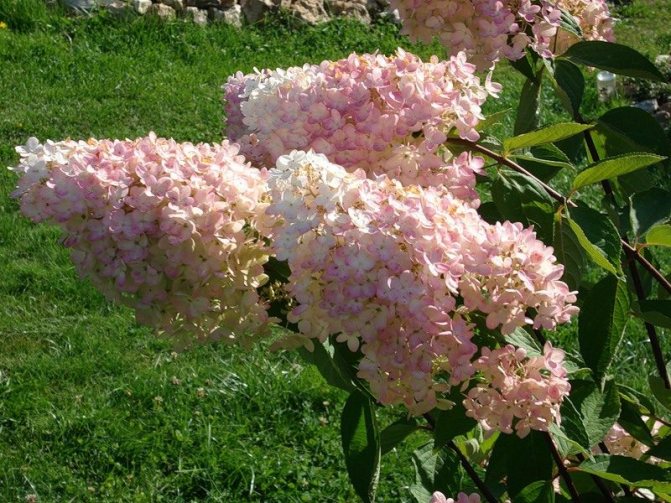

Hydrangea paniculata Grandiflora
Application
Because of its lush cut, the tree hydrangea looks best in large gardens and landscaped parks, planted solo against a dark fence or green lawn. Low varieties are great for growing in small backyards. The shrub goes well with other types of hydrangeas (panicle, large-leaved and rough), creating beautiful and original compositions with them.
Can be planted in combination with smaller plants that prefer semi-shaded areas, ferns and hosta. Hydrangeas are used to create gorgeous, informal hedges suitable for large gardens or large spaces. After flowering, the inflorescences remain on the shoots for a long time, after drying, they form an original winter garden decoration. The inflorescences are suitable for dry bouquets.
Characteristic
Hydrangea paniculata Grandiflora belongs to the ancient varieties, it was known in East Asia as early as 1860. At that time, the bushes could reach 10 m, modern specimens are more modest in size.
The main characteristics of the variety include:
- high decorativeness during flowering;
- growth rate (up to 25 cm per year);
- frost resistance - tolerates up to -30 ° С, due to which it can be grown even beyond the Urals;
- disease resistance.
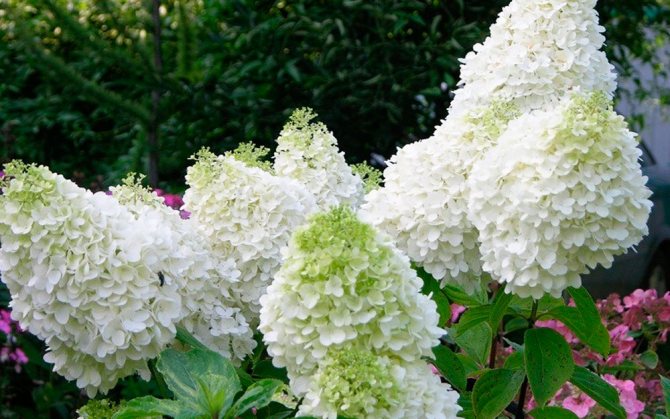

Hydrangea paniculata
Additional Information. The flower was first discovered on the island of Mauritius, in 1768, thanks to a round-the-world expedition of the French.
Diseases and pests
The main problems faced by the owners of the hydrangea grandiflora are the appearance of powdery mildew and the attack of garden aphids.
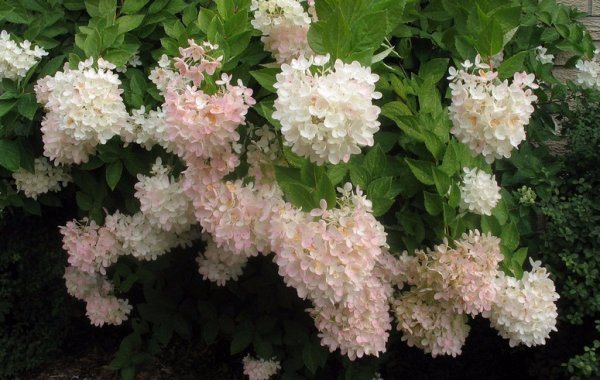

To combat powdery mildew, before flowering, the bush must be sprayed with special preparations - Ochikom, Fundazol and the like, following the instructions for use.
Aphids can be driven away by treatment with chemicals, or you can independently prepare a solution of infused garlic (250 g) with the addition of laundry soap (50 g).
Spraying should be done weekly.
Grandiflora is a type of panicle hydrangea. She inherited frost resistance, and is distinguished by large inflorescences in the form of pyramids. The plant is unpretentious in care and can spend the winter outdoors - it is recommended to cover only young immature plants.
Diseases such as garden aphids and powdery mildew threaten Grandiflora. In the fight against the latter, the preparations "Fundazol" and "Oxycom" showed themselves well. By regularly using them to treat hydrangeas at the beginning of flowering, you can protect them from the ailments mentioned. However, when using insecticides, it is important to strictly follow the instructions for the composition, not exceeding the dosage recommended by the manufacturer.
It is possible to rid the plant of aphids with the help of chemical compositions or through self-prepared folk remedies. For example, the infusion has proven itself well
which is in front of the immediate
hydrangeas are mixed with laundry soap at a ratio of 5: 1.
With a responsible approach to growing plants in your garden, be it Grandiflora or any other crop, you will not have any problems, and all that remains is to admire the lush flowering and general decorative appearance of the shrub.
Was this helpful?
Thank you for your opinion!
Write in the comments which questions you did not receive an answer to, we will definitely respond!
You can recommend the article to your friends!
You can recommend the article to your friends!
Yes
Not
Has already helped 56 times
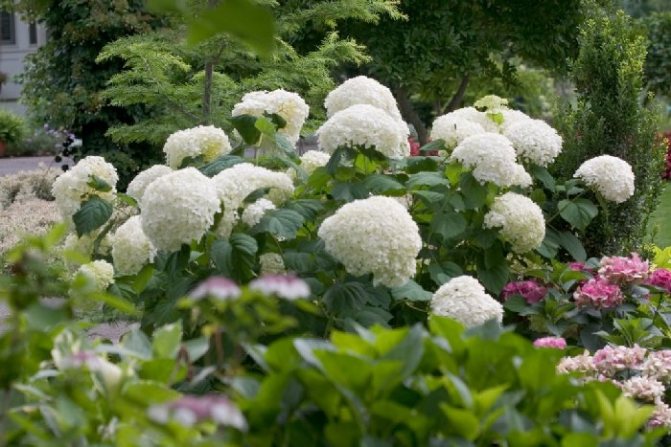

Treelike hydrangea is practically not susceptible to disease and pest attacks. Sometimes a spider mite or green leaf aphid may appear on the bush. To destroy the pest colony, the plant is treated with ready-made insecticidal preparations.
Gardeners prefer not to wait for the appearance of harmful insects, but to carry out preventive treatment. Various recipes are used as folk remedies, but the most popular and affordable are infusion of garlic and dandelion.
In rainy summers or with excessive watering, hydrangea can be affected by powdery mildew. To fight infection, fungicidal preparations are used, which are produced in a concentrated form. The processing of the bushes is carried out according to the instructions on the package of the substance. In the future, watering the hydrangea is reduced.
Care
In order to preserve the decorative appearance of hydrangea for a long time, it must be systematically looked after. For this, the activities described below are carried out.
Watering
Although this variety is positioned as drought tolerant, it needs frequent moisture to maintain high-quality inflorescences. Weekly you need to bring 1.5-2 buckets of water under the bush. Water the plant in the morning or evening with warm water. If the roots are bare from the procedure, the bush must be spud with peat.
In too hot weather, large-flowered hydrangea is watered 2-3 times a week. In rainy summers, the frequency of watering decreases. When the soil is waterlogged, the bush can be affected by fungal diseases.
Top dressing
For abundant growth of shoots and buds on them, hydrangeas require constant feeding. It is performed several times per season.
- In the spring, organic fertilizers are used: mullein or bird droppings (1 part) are stirred in water (15 parts), infused for 1 day. Hydrangea is poured with a solution at the rate of 2 buckets under a bush;
- At the beginning of budding, top dressing is performed, consisting of the following components: 20 g of ammonium nitrate, 30 g of superphosphate and 30 g of potassium salt, diluted in 1 bucket of water;
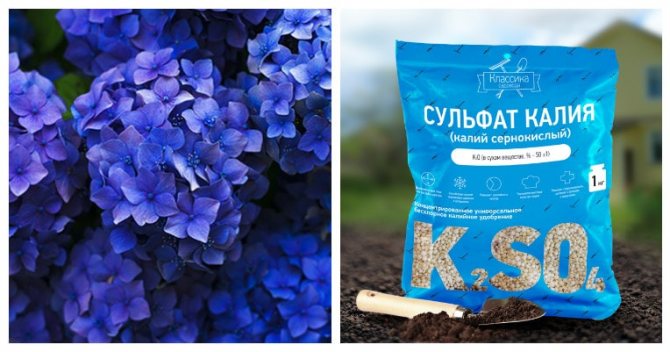

Feeding hydrangeas
- In summer, plants are fertilized with complex feeding for decorative flowering plants;
- Autumn top dressing, consisting of 50 g of superphosphate and potassium salt, applied under the bush, will help him to endure the frosty winter.
Note! It is necessary to fertilize moistened soil to avoid scalding the roots with salts.
Pruning
The number of shoots on hydrangeas increases every year. In this case, the quality of inflorescences may suffer: when the bush thickens, their number decreases, just as they themselves become smaller. For this reason, the plant must be formed at the stage of its growth. Hydrangea can be grown not only as a bush, but also as a tree, removing excess shoots from the root itself.
Pruning starts the process of forming new branches and inflorescences. To accelerate their growth, the lashes are cut into 2-3 buds. For rejuvenation, the plants are cut off all branches at the root. In the next season, the hydrangea will release many young shoots. In addition, broken, diseased, dried up branches are constantly cut off.
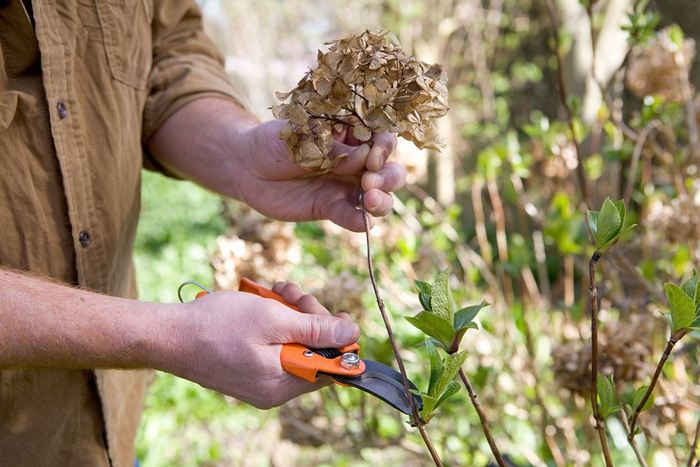

Pruning hydrangea
After disembarking
Hilling should be done immediately after planting. This allows you to protect the "young" from the sun, and the roots - to begin to develop. If the stalk is small
, it is covered with dug earth with a head, if rather high, there is enough of a hill near the roots.After a couple of weeks, the slide must be carefully removed so that the rose grows.
Thereafter the tops are cut off a little
and for 2-3 weeks every two days the bush is watered with growth stimulants. This will give the flowers an impetus to active growth.
Subsequent care should include loosening
, top dressing every 2-3 weeks, watering, pinching or pruning, and disease and pest control.
Before the first frost all leaves must be removed from the bushes
, cut them and completely prepare for winter, covering them with sawdust and covering them on top.
What it is?
Grandiflora is an arbitrary garden group of roses, unrecognized in many European countries, but is actively used by breeders in Russia and the United States to develop new varieties.
This type of rose appeared in the middle of the twentieth century in the United States. when crossing floribunda roses and hybrid tea. The resulting hybrid inherited the best qualities from its ancestors:
- large double flowers, collected in inflorescences of 3-5 buds, or single, with a delicate aroma or not smelling at all;
- a tall bush with powerful long spreading stems;
- characterized by long-term continuous flowering, frost resistance and resistance to fungal diseases.
Grandiflora propagates by cuttings and grafting.
Plant features
A rounded bush is formed by thin shoots, which are covered with a small amount of fluff. Ovate leaves about 20 cm long are painted in a bright green tint. Their undersides are light bluish-green. The leaves are attached to the branches with long and thin petioles. They are located on the shoots opposite each other (the so-called opposite arrangement).
Quite large inflorescences with a diameter of almost 15 cm, having the shape of a shield, are formed from whitish flowers about 2 cm wide. Lush flowering lasts from mid-July to October. The seeds ripen in October.
This type of hydrangea is different:
- good enough winter hardiness,
- the fact that it actively grows after winters with severe frosts,
- high percentage of rooting cuttings.
Hydrangea arborescent grows best on soils with a slightly acidic reaction (pH at 5.0), but is more tolerant of lime in the ground than other varieties of hydrangeas.
On the basis of this species, several varieties have been created that can be purchased in nurseries of our country:
The well-known and very popular variety "Annabelle" attracts attention with large and heavy snow-white inflorescences up to 25 cm wide, which can lodge. This rather unpretentious and fast-growing plant reaches a height of 1.0 to 1.5 meters, and a width of almost 3 meters. Flowering lasts all summer (three months).
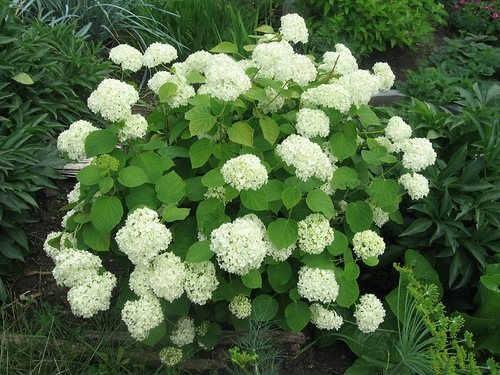

Bushes "Grandiflora" ("Grandiflora") are liked for their spectacular appearance and long powerful flowering. Lush inflorescences change color several times during flowering. When blooming, the inflorescences are painted in a delicate greenish tint, then they become snow-white. By the end of flowering, the inflorescences take on a light whitish-cream shade. The height of the bush is about 2 meters, and the width can reach almost 3 meters.


The variety "Invincibelle" or "Pink Annabelle" was created on the basis of "Annabelle". This is the first tree-like hydrangea to be colored pink. In addition to color, it is interesting in that if after the first flowering, pruning of the bush is carried out, the plant will bloom again in 6 weeks. This variety received a bronze medal at the International Exhibition of Nursery Products "Plantarium 2011".
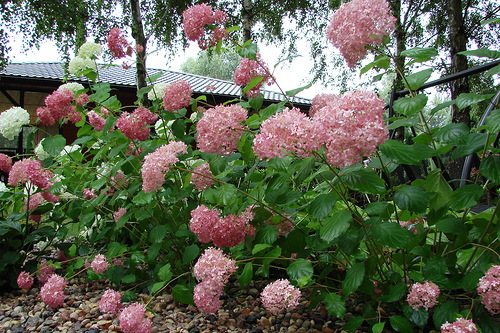

Strong Annabelle or Incrediball is also sourced from Annabelle, but its white blossoms, which bloom on strong and sturdy branches, are resistant to wind and rain. Bloom lasts from June to September. This variety has received an award from an international competition.
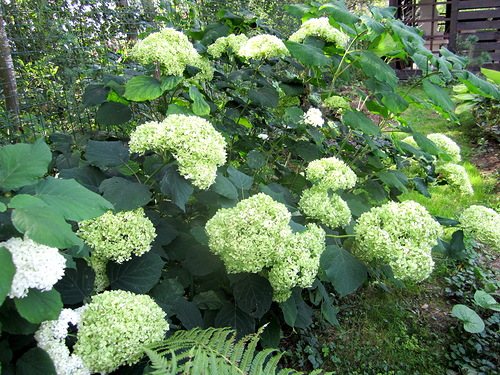

Preparing for winter
It begins no later than a couple of weeks before the arrival of permanent frosts. First of all, they remove the fatty green shoots that did not have time to ripen the tops, most of the foliage, buds and flowers. The bushes themselves spud a little.
Before the soil freezes over, wooden boxes are placed over the roses and covered with polyethylene. Peat or sawdust and spruce branches are poured on top of the film, after the soil is slightly frozen. One layer of film is also laid on top.


Hydrangea "Grandiflora" - photo
Appearance
Large-flowered petunia (grandiflora) is a medium-sized flowering perennial of the Solanaceae family. Wild species are found in the rainforests of South America. The height of the bush varies from 40 to 60 cm, depending on the variety, the stem can be erect or creeping. Forms large shoots of green color, there are small hairs on their surface. The leaves are solid, alternate and can be of different sizes.
A distinctive feature of this type of petunia is large single flowers with a diameter of 10-12 cm. They develop on small pedicels, have a double or simple texture. The color of the petals is very diverse; two-tone varieties with spots, strokes and other inclusions are popular. The plant begins to bloom in early summer and can retain its decorative effect until the first frost in the fall. The fruit is a seed capsule.
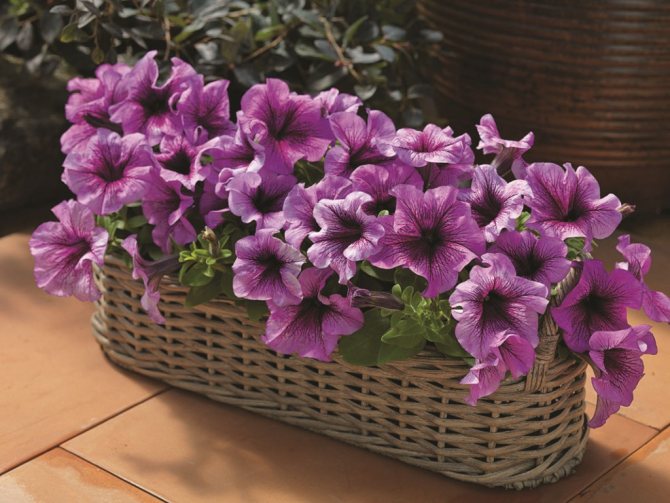

Bloom
Blossoming of grandiflor roses usually begins from the second week of June and lasts until autumn. Terry flowers are found in large numbers on the bushes, covering most of the leaf blades. The diameter of the flowers can reach 14-15 cm. The aroma of the buds is poorly expressed, but on windy days the smell still spreads over the garden area.
In case of non-compliance with the recommendations of specialists regarding the cultivation and care of plants with thorns, they may cease to please with flowering. A similar problem can occur in the background:
- planting bushes in a draft;
- improper trimming;
- lack of dressing;
- bacterial damage to green spaces;
- lesions of the bushes by the disease.
Note! For successful cultivation, it is not enough to know what a rose of grandiflora is. The rose bush still needs to be given at least a minimum of attention. Only in this case flowering will really delight, and every year.
Gardeners reviews
Mashustik, Saratov
Queen Elizabeth - 3 bushes of my mother-in-law are over 20 years old. They hibernate with varying success, for many years they did not hide and did not look after at all. At the same time, they are still alive and still nothing.
Tan-Tan, Saint Petersburg
I have only one grandiflora so far. She is 2 years old. Queen Elizabeth. This is the founder of the whole group. It is quite simple to grow it, since an unpretentious plant can take root even in a darkened area, it is very resistant to diseases and various weather conditions. Pink inflorescences consist of 5-10 buds up to 10 cm in diameter.
How to use in the garden
Giving "Grandiflora" a standard form allows you to use this hydrangea as a park or pot culture, decorating front stairs and driveways, balconies, verandas and patios. When creating landscape landscapes on a site, gardeners recommend leaving the bushy form, planting it as a single plant or in a group. When planting in a group, "Grandiflora" is best placed in the foreground, using mock-orange and mountain ash as a background. It looks luxurious when planted as a hedge, creating a beautifully flowering dense fence.
Attention! Do not plant "Grandiflora" next to fruit plants, otherwise there will be a rivalry between them for water.
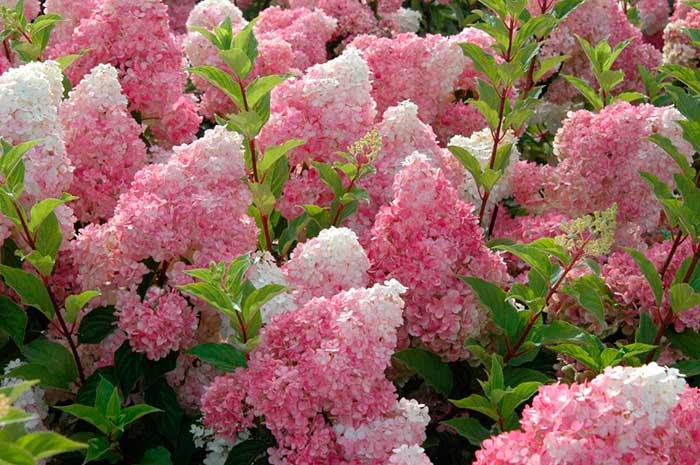

Hydrangea should not be grown next to fruit trees.
Blooming hydrangea can be used for cutting, and dried panicles like dried flowers for creating winter compositions. For harvesting dried flowers, the blossoming brushes of "Grandiflora" are cut and hung upside down.Florists recommend harvesting panicles at different stages of flowering, because, after drying, it retains the color that was when it was cut.
As the gardeners' reviews show, the Grandiflora hydrangea is an ornamental garden culture with moderate requirements, ensuring that you can enjoy its colorful bloom for a long time.
Main varieties
All varieties of petunias can be roughly divided into 3 classes. Moreover, most botanists adhere to this classification. For example:
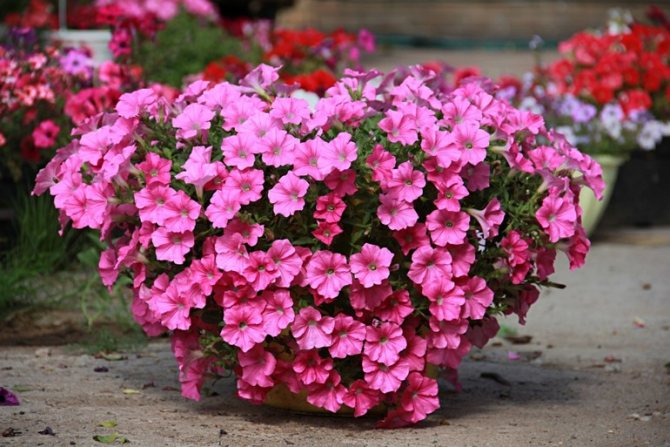

- Grandiflora, which includes all bush representatives. Such petunias are often found in flower beds, pots, along the paths of private plots.
- Ampel flowers. This type is considered the most sophisticated. They plant it in pots and baskets, from which the bushes of ampel petunias fall beautifully down, and their shoots reach one and a half meters in length.
- Cascading plants. Their main property is the rapid growth of shoots to the sides. They reach a height of 40-50 cm.
All classes are still divided into varieties. They depend on the shape of the plant and other indicators. For example:
- With smooth and double flowers.
- With large and small peduncles.
- Having flowers in the same color and in different colors.
- With and without fringe on the flowers.
- Low-growing plants and creeping on the ground.
The Grandiflora group includes undersized (25−35 cm) and tall (50−70 cm) petunias with even compact or spreading bushes with a small number of large simple or double flowers. Their edges can be either smooth or wavy. Petunia Grandiflora is rarely planted in open ground, more often it is planted in containers and pots on window sills, terraces and balconies, since they are less resistant to weather conditions. In the event of a downpour or a sudden cold snap, the pots with plants can be protected by simply removing them for a while in the house.
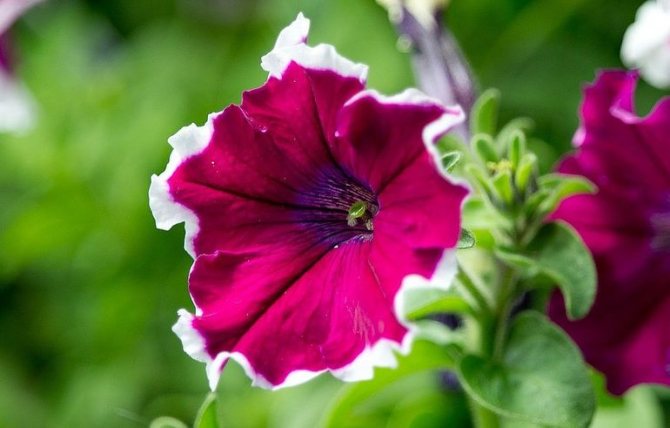

The hybrid of Multiflora and Grandiflora has proven itself perfectly, incorporating the best qualities of both varieties: large flowers, weather resistance, a large number of flowers. Such hybrids are classified as "Floribunda".
Granidiflora has about 30 types of cultivars and several hybrid units. The main types of petunia Grandiflora include:
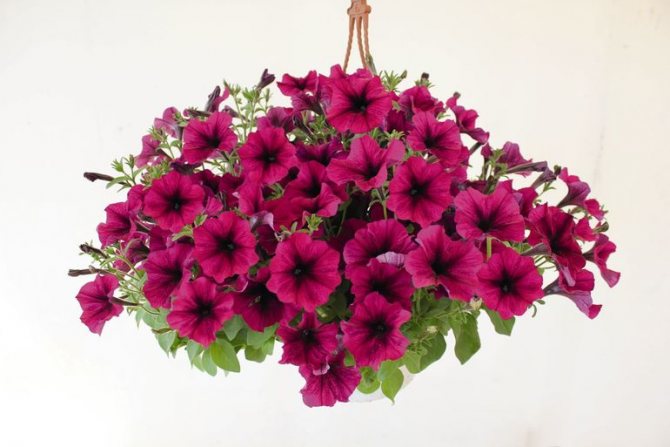

- Grandiflora Prism Sunshine. Has bright yellow flowers. Plant height up to 25 centimeters.
- Grandiflora Dreams. A more weather-resistant plant, it has lush, undersized bushes. Flower colors: yellow-white, pink, light purple, red.
- Grandiflora Burgundy. This is a plant with large bushes, the height of which reaches 35 centimeters. It blooms from June to late autumn. The flowers are velvety, have a dark cherry color.
- Grandiflora Limbo (Limbo). A compact, branchy plant with abundant flowering. The color scheme is varied: the flowers are pink, white, lilac, cherry and other shades.
- Grandiflora Aladdin. The plant has a height of up to 40 centimeters. Drought resistant. Flowers with wavy edges, having blue, purple, crimson shades.
Let's summarize
- The panicle hydrangea Grandiflora is not a very picky shrub with high decorative qualities.
- It should be grown on the sunny side of the yard (but with the possibility of light shading), while protecting from wind and strong draft. The soil should be moderately acidic.
- Hydrangea care is based on three whales: watering, frequent feeding, autumn pruning. For the winter, the plant can be left uncovered.
The hostess of a large garden center will tell you about other types and varieties of hydrangeas, their advantages and disadvantages:


